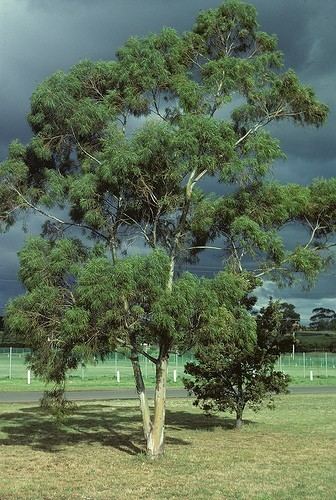Rank Species | ||
Similar Eucalyptus amygdalina, Eucalyptus risdonii, Eucalyptus coccifera, Eucalyptus ovata, Eucalyptus cordata | ||
Eucalyptus pulchella, commonly known as the white peppermint-gum or white peppermint, is a flowering tree in the myrtle family, Myrtaceae. An erect, smooth-barked tree, it grows to 20m in height and is recognisable by its very narrow leaves. E. pulchella is a lowland species where it occurs on the upper slopes of well drained sites with a Jurassic dolerite substrate in grassy or heathy open forests. Such sites typically have a north-west facing aspect with exposure to high solar insolation loads resulting in periodic drought stress. This species is locally widespread and endemic to the undulating, hilly terrain of south-east Tasmania.
Contents

Eucalyptus is derived from the Greek words eu, meaning well, and kalypto, meaning to cover which refers to the characteristic operculum which acts as a cap, protecting the flowers. The species name pulchella is a diminutive of the word pulcher which in Latin means beautiful. The common name, white, refers to its smooth white trunk.

Description
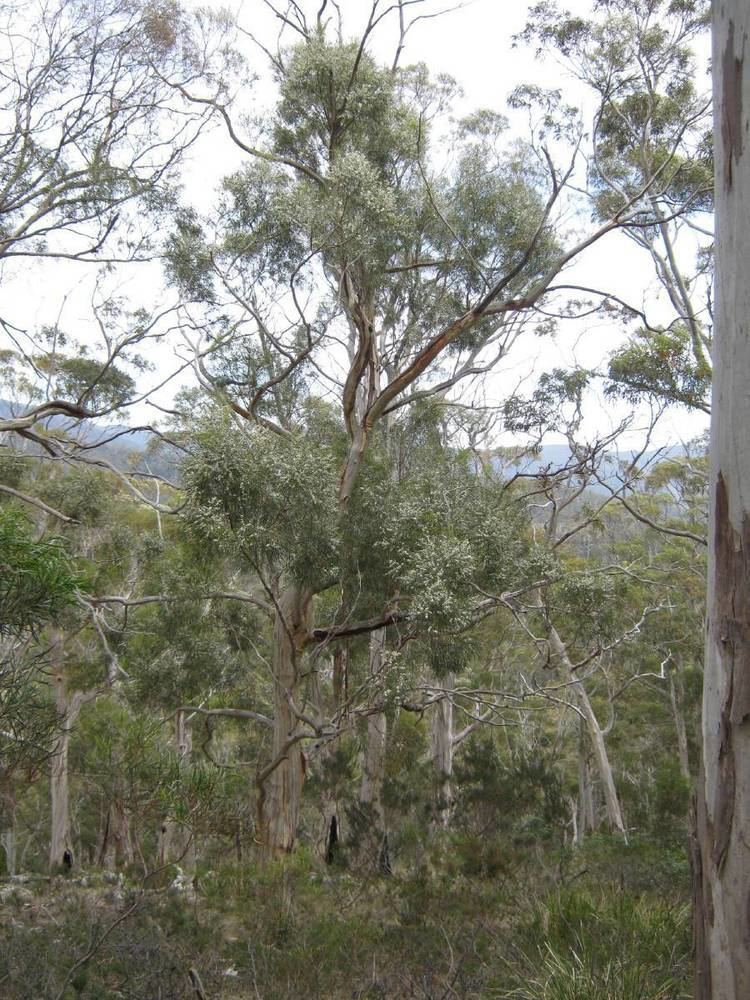
Eucalyptus pulchella is an erect tree growing up to 20m in height. It has smooth white or pale grey bark except for at the base of the trunk. Juvenile and adult leaves are narrow (<8mm), linear and pale green to subglaucous in colour. E. pulchella bears the characteristic flowers and fruit of the Eucalyptus genus. The flowers have numerous cream stamens enclosed in an opercula cap which is a fusion of the corolla. As the stamens expand the operculum is forced of revealing the showy stamens. The developing buds are club shaped and the woody fruits, also known as capsules, are small, pear-shaped with a disc level to the rim and occur in umbels greater than 7. The valves at the end of the capsules open to release the small(1mm), rod-shaped seed.
Distribution and Habitat
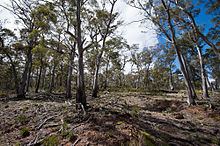
Eucalyptus pulchella is endemic to the lowlands of south-east Tasmania where it inhabits undulating, hilly terrain at altitudes between 100-500m above sea level. The interaction between aspect, soil type and water drainage play an important role in determining the distribution of E.pulchella. It occurs on the upper north-west facing slopes of free-draining dolerite capped hills where soils are shallow. On such ridgetops water availability is limited due to the binding capacity of the Jurassic dolerite substrate and the shallow soil depth. Dry conditions due to the effect of soil are enhanced by aspect affect in which north-west facing slopes receive high solar insolation loads and are susceptible to periods of drought stress. The ability of E. pulchella to resist occasional severe drought explains its distribution on dry dolerite ridgetops. Although locally widespread E. pulchella is restricted to south-east Tasmania which may be explained by a glacial tree line preventing its spread into suitable habitats further north. Although E. pulchella extends outside its range reaching as far north as Bothwell, its true distribution is difficult to discern due to error involved with field identification due to a 'half barked' intergrading form of Eucalyptus amygdalina.
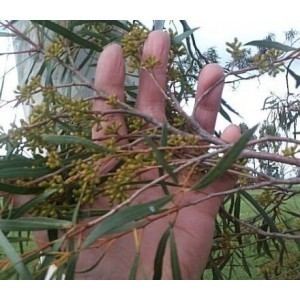
Eucalyptus pulchella occurs as a small to medium-sized spreading tree as the dominant species in grassy to heathy dry sclerophyll open forest and woodlands. Such dry sclerophyll communities have an open structure and rarely grow taller than 25m. The understory is typically dominated by the ground cover layer including native grasses and sedges such as Lomandra longifolia and is the most diverse. The shrub layer is sparse and typically includes species such as Exocarpos cupressiformis however, if the fire interval exceeds a 15-year interval the shrub may become dominant in the understory. E. pulchella is not always the dominant species, in sections of the east coast, hybrids between E. pulchella and E. amygdalina and genetic variants of E. amygdalina may act as the dominant species. E. pulchella also commonly forms mixed stands with Eucalyptus globulus, Eucalyptus viminalis and Eucalyptus rubida.
Fire
Eucalyptus pulchella like many other species from the myrtaceae family requires fire at least once in its lifetime in order to retain disclimax vegetation and complete its lifecycle. Seeds of Eucalyptus are held in woody capsules which often remain on the tree for several years after reaching maturity. A fire event is required to dry out and open the woody capsule to release the seed. Fire creates a sterile, nutrient enriched ashbed which favours shade-intolerant eucalypt seedlings by eliminating any competitors. In fact, dry sclerophyll communities and Eucalyptus species are fire promoting. The flammable nature of eucalypt bark and leaf litter which persists on the forest floor and the volatile oils in the leaves held in the canopy promote a fire frequency of approximately 20 years in dry sclerophyll communities.
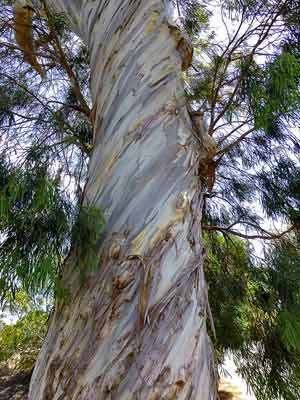
As well as seed regeneration, eucalypts utilise vegetative regeneration to recover from fire depending on its intensity. Eucalypts can do this by basal sprouting from lignotubers or from the stem, sprouting from epicormic buds.
Pollination
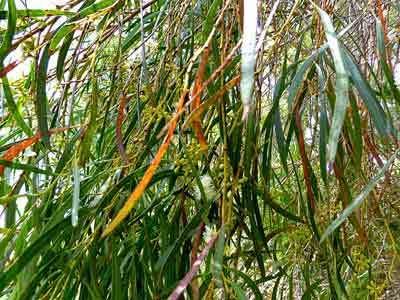
Eucalyptus are preferential outcrossers and production of seed is dependent on animal vectors to transfer pollen between flowers due to the unsuitability of the pollen to be transported by wind. Pollinators are generally unspecific and tend to include both birds and insects which are attracted to the flower by a nectar reward. It is likely that pollen is transferred within a close proximity to its source due to the close to nearest-neighbour foraging pattern employed by birds. E. pulchella flowers at high intensity for approximately 2 months during summer reaching its peak around November
Seed dispersal
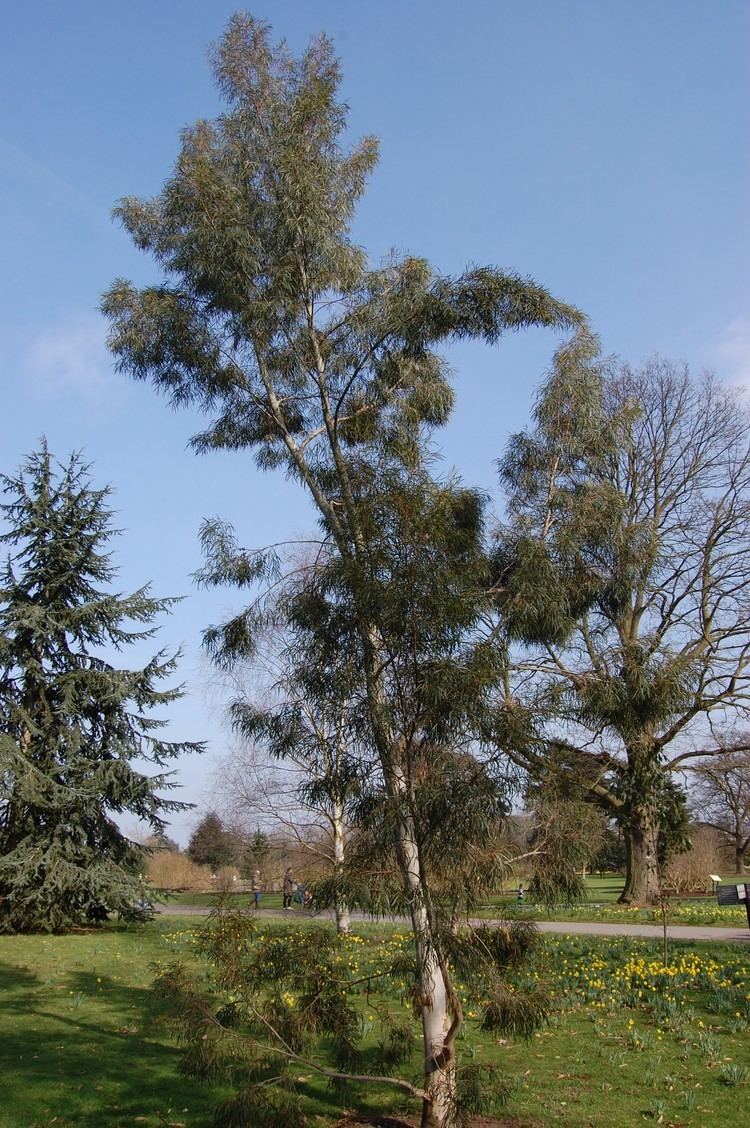
In Eucalyptus seed is housed in a woody capsule and is released through valves which open after the capsule has dried out. The capsules tend to be retained in the canopy for several years after reaching maturity. Seed is released on mass following a fire event or extremely hot weather conditions. Seed is typically dispersed one canopy height away from the base of the tree and apart from seed harvesting by ants, movement is limited once it hits the ground.
